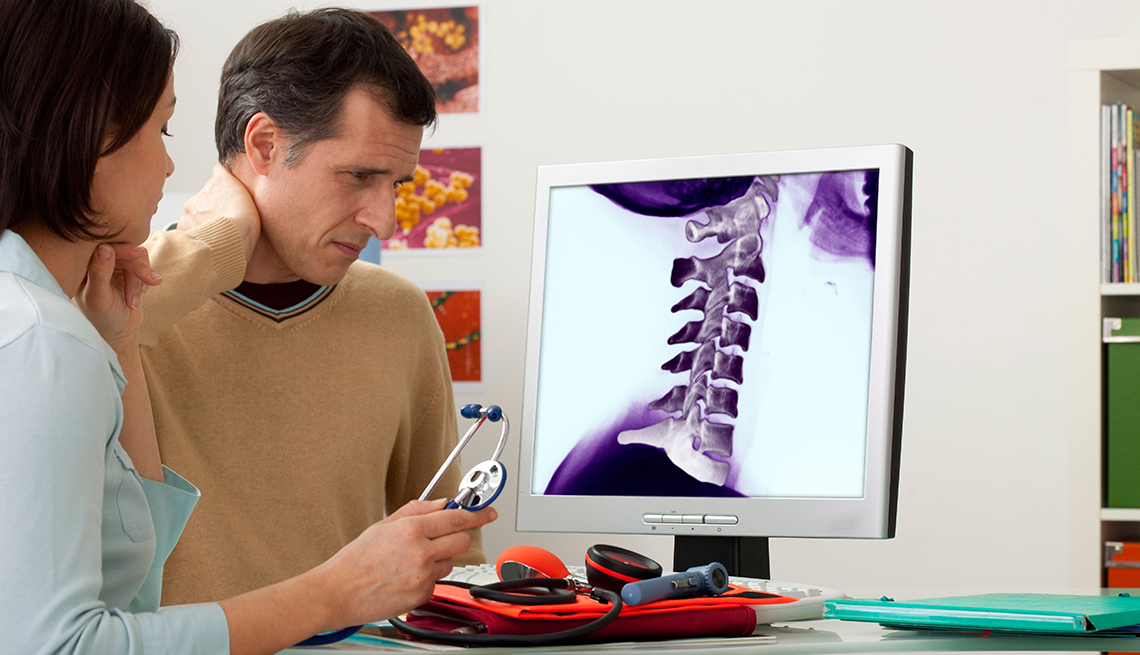AARP Hearing Center
Before the morning I was jolted awake with one of its more mysterious symptoms, I had never even heard of degenerative disc disease, though I was certainly aware of the intense tingly, buzzing sensation that was shooting down my arms and into my hands.
Shaking out my arms and hands didn’t help; it still felt as though I’d pressed my fingers against electrical outlets and shocks radiated up and down my upper limbs. Though they ebbed and flowed throughout the day, the seriously uncomfortable vibrations returned in force as I drove to an appointment that afternoon — and that’s when I began to fear that something was seriously wrong.
When the symptoms didn’t go away after a few days, I went to see my internist, who was as mystified as I was. Because I didn’t have any other symptoms, she thought these neurological signs might be due to Lyme disease, celiac disease or a vitamin B-12 deficiency, and sent me for a battery of blood tests, all of which turned out to be negative. Next up: a visit to an esteemed neurologist who examined me for multiple sclerosis (negative) and did special, and painful, nerve conduction tests to see if I had nerve damage in my extremities (thankfully, I didn’t). After another slew of blood tests yielded no insights, on a hunch, the neurologist sent me for an MRI of my neck. Sure enough, three bulging discs were pressing on my spinal cord, causing the tingling, shock-like sensations. After six weeks of stress and discomfort, the mystery was solved! The diagnosis: degenerative disc disease and cervical stenosis (a narrowing of the spinal canal in the neck).
Little did I know that one-third of women and men between the ages of 40 and 59 show evidence of degenerative disc disease on CT scans; the prevalence doubles among those ages 60 to 69 and quadruples for those 70 to 79, according to a 2018 report from the Framingham Study. It turns out that degenerative disc disease in the neck is 38 percent more common among women than men, according to a study at the Loyola University Medical Center in Maywood, Illinois.
Yet, the term is actually a bit of a misnomer because “degenerative disc disease” is not actually a disease. “It’s very much a normal part of aging, where we develop some wear and tear of the discs in our spine; we all get it to some degree,” says Alpesh A. Patel, M.D., a professor of orthopedic surgery and neurological surgery at the Northwestern University Feinberg School of Medicine in Chicago.


































































